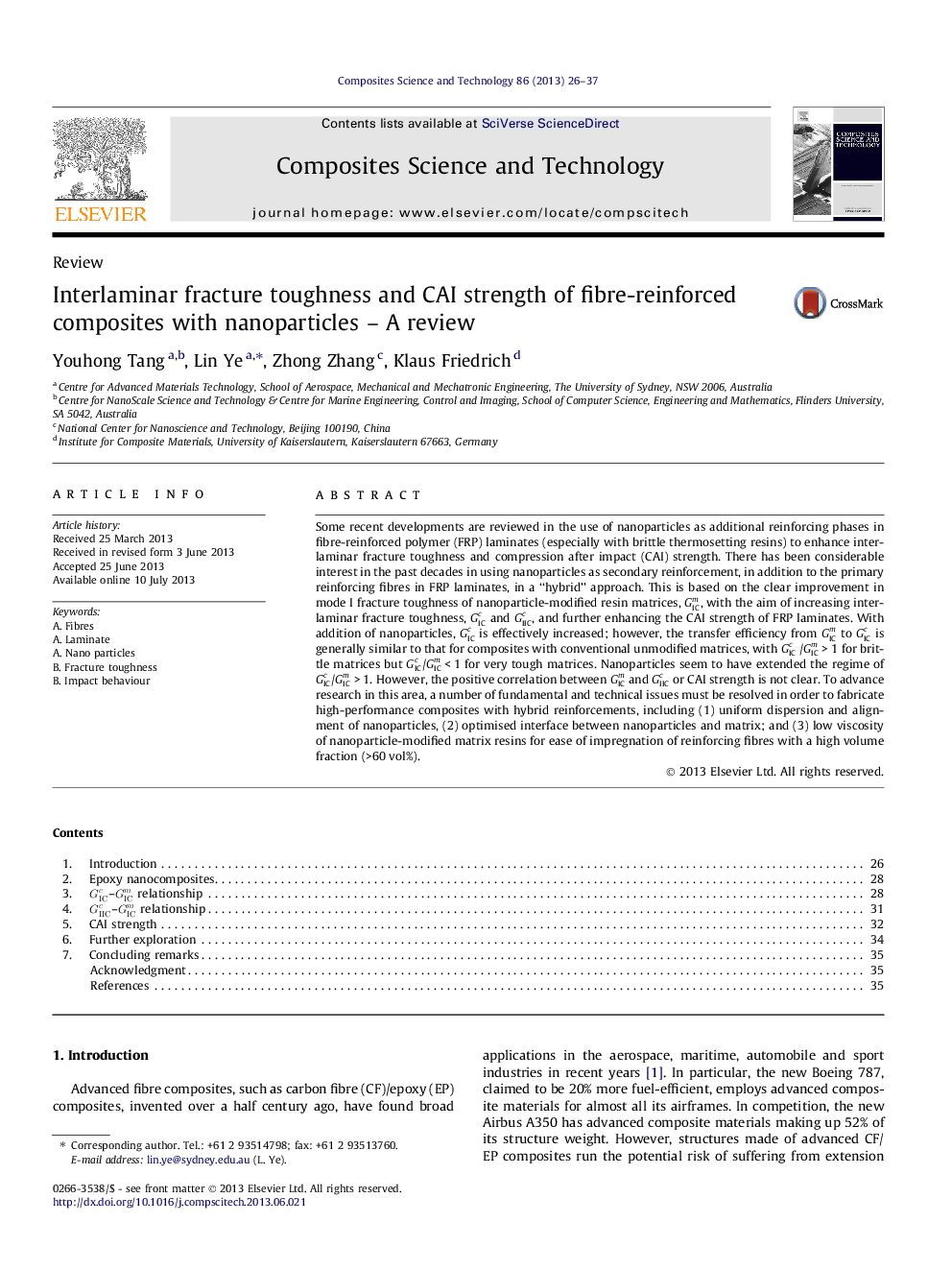| Article ID | Journal | Published Year | Pages | File Type |
|---|---|---|---|---|
| 820406 | Composites Science and Technology | 2013 | 12 Pages |
Some recent developments are reviewed in the use of nanoparticles as additional reinforcing phases in fibre-reinforced polymer (FRP) laminates (especially with brittle thermosetting resins) to enhance interlaminar fracture toughness and compression after impact (CAI) strength. There has been considerable interest in the past decades in using nanoparticles as secondary reinforcement, in addition to the primary reinforcing fibres in FRP laminates, in a “hybrid” approach. This is based on the clear improvement in mode I fracture toughness of nanoparticle-modified resin matrices, GICm, with the aim of increasing interlaminar fracture toughness, GICc and GIICc, and further enhancing the CAI strength of FRP laminates. With addition of nanoparticles, GICc is effectively increased; however, the transfer efficiency from GICm to GICc is generally similar to that for composites with conventional unmodified matrices, with GICc /GICm > 1 for brittle matrices but GICc/GICm < 1 for very tough matrices. Nanoparticles seem to have extended the regime of GICc/GICm > 1. However, the positive correlation between GICm and GIICc or CAI strength is not clear. To advance research in this area, a number of fundamental and technical issues must be resolved in order to fabricate high-performance composites with hybrid reinforcements, including (1) uniform dispersion and alignment of nanoparticles, (2) optimised interface between nanoparticles and matrix; and (3) low viscosity of nanoparticle-modified matrix resins for ease of impregnation of reinforcing fibres with a high volume fraction (>60 vol%).
